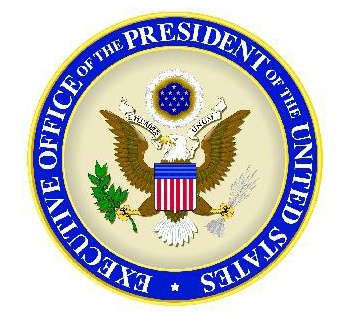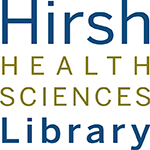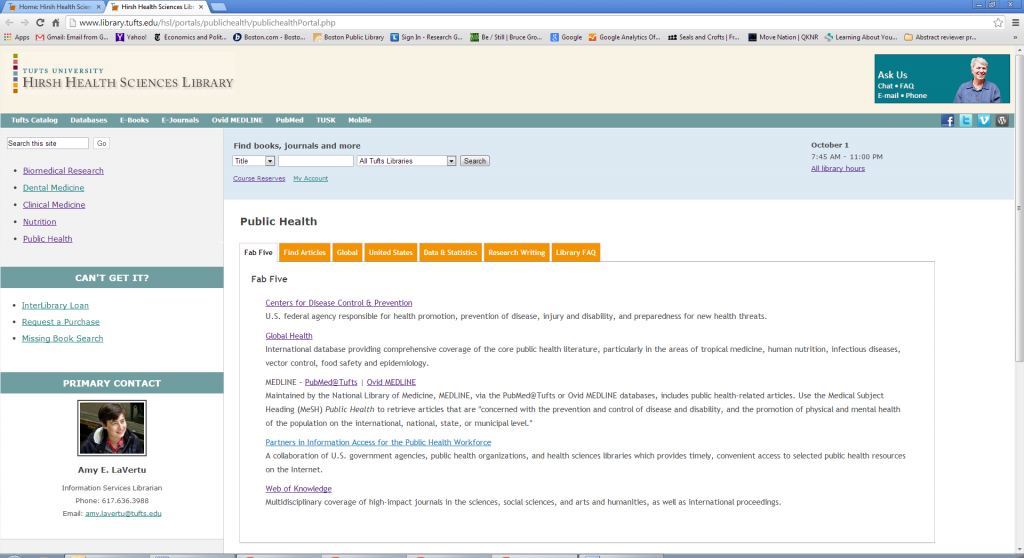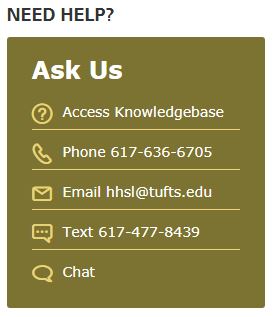
The Hirsh Library salutes George Q. Daley, MD, PhD, who will speak at the 8th Annual Jeffrey Isner Lecture on Wed., Nov. 6. at 4pm in the Sackler Auditorium. For a description of his work on stem cells in development and disease, see his HHMI page, which links to a list of his works on PubMed. To read the full text of an article that is not in the public domain, glean its PMID (at the bottom of the record), plug it into PubMed@Tufts, click on its title, and link out to the PDF with the blue Tufts Electronic Holdings icon.
A paragon of the biological literature, Dr. Daley is on the editorial board of the journals Science, Cell, Cell Stem Cell, Stem Cells, and Blood. He is also one of the most cited authors in the biomedical literature. An author search of Web of Science sorted to show his most cited papers shows:
- His 1990 Science paper with David Baltimore re: the induction of CML with the P210BCR/ABL gene has been cited 1527 times.
- His 2007 Nature paper, “Reprogramming of human somatic cells to pluripotency with defined factors” has been cited 1270 times.
By clicking Create a Citation Report, one can see that he has been cited by others 21,432 times, has an average of 62.5 cites per article published, and an H-index of 71. For an explanation of the H-Index, please see our guide, Bibliometrics for Authors.
The Hirsh Health Sciences Library now subscribes to Lexicomp Online with AHFS (The American Hospital Formulary Service). Lexicomp Online is an excellent resource for drug doses, mechanisms of action, drug interactions and adverse effects. Facts & Comparisons, Trissel’s IV-Check, Comparative Drug Tables, and Drug Comparison Reviews are all accessible within the database.
In yesterday’s post, we mentioned that the White House OSTP recently issued a memo mandating public access to federally funded research, including the related data sets. So what’s so great about open data anyway?
“Ensuring open access to the data behind the literature will play a key role in seeing that the scholarly communication system evolves in a way that supports the needs of scholars and the academic enterprise as a whole.” –SPARC: Open Data
According to Dan Gezelter, of The OpenScience Project, Open Science encompasses four fundamental goals:
- Transparency in experimental methodology, observation, and collection of data
- Public availability and reusability of scientific data
- Public accessibility and transparency of scientific communication
- Using web-based tools to facilitate scientific collaboration
–e-Science Portal for New England Librarians: Open Science
And what about the humanities?
- As reported in an article from Inside Higher Education, many humanists see tagged, linked open data as the way to provide for cross-disciplinary research
- Using open data would increase the relevance of cross-disciplinary research to broader communities, including the general public
- The ability to use open data from various fields would open up new avenues of research and collaboration within the humanities and beyond
We hope you had a great Open Access Week! Visit the Scholarly Communication at Tufts website for the latest news on open access, author’s rights, and copyright.
Public health encompasses such a wide range of topics that it can be challenging to know where to begin! The public health portal is designed to be your first stop for locating resources focused on epidemiology and public health.
This portal contains sections that will connect you to key public health journals, article databases, and critical sources of statistical data on the health and well-being of populations.
Because ‘local is global’ (and vice versa!) when it comes to public health, this portal contains both a section featuring United States-specific public health resources and a section featuring resources offering a global perspective on public health-related topics.
The public health portal will also point you towards guides on research writing and using the Hirsh Health Sciences Library.
Have you explored the public health portal? Is something missing? Let us know what you think by giving us an email or call!
 In February 2013, the director of the White House Office of Science and Technology Policy released a memo directing major federal funding agencies to develop plans to make the published results and digital data sets of federally funded research freely available to the public within one year of publication. Agencies with R&D budgets of more than $100 million, including NIH, NSF, NEH, USAid, among others are impacted. This directive dovetails with the recent bipartisan public access bill FASTR introduced into both the House and Senate. It is also in line with the mandate already in place by NIH, but expands to include data, not just journal articles. (Stay tuned for tomorrow’s post about open data!)
In February 2013, the director of the White House Office of Science and Technology Policy released a memo directing major federal funding agencies to develop plans to make the published results and digital data sets of federally funded research freely available to the public within one year of publication. Agencies with R&D budgets of more than $100 million, including NIH, NSF, NEH, USAid, among others are impacted. This directive dovetails with the recent bipartisan public access bill FASTR introduced into both the House and Senate. It is also in line with the mandate already in place by NIH, but expands to include data, not just journal articles. (Stay tuned for tomorrow’s post about open data!)
The exact details of how this will roll out are still forthcoming, but, rest assured, various groups at Tufts are monitoring developments. We are looking forward to working with our researchers to comply with the federal requirements as they are established.

Want to hear a Nutrition lecture? Looking for a veterinary gross anatomy image? Interested in learning more about how to create a video game? Need to fine-tune your “medical interviewing” techniques? You can find the answers to these questions and much, much more on the Tufts OpenCourseWare (OCW) website. Tufts OCW is a free, online publication of high-quality educational material contributed by Tufts faculty from a number of Tufts University courses. Started in 2005, the OCW website has received more than 4 million visits and reflects Tufts’ early advocacy of the open educational resources (OER) and open access (OA) movements.
 Join the open access (OA) movement! Email ocweditor@tufts.edu to join hundreds of Tufts faculty colleagues by sharing your course material online.
Join the open access (OA) movement! Email ocweditor@tufts.edu to join hundreds of Tufts faculty colleagues by sharing your course material online.
The Tufts OCW editor will work with you to help format your content for public consumption under a Creative Commons license that maintains faculty copyright while fostering reuse.
A few weeks back we asked faculty to participate in a survey about impressions of open access scholarly literature, that is, literature which is digital, online, free of charge, and free of most copyright and licensing restrictions. A big thank you to everyone who responded to the Tufts Scholarly Communication Team survey. A similar survey was also conducted in the fall of 2011. As promised, here are some quick numbers from both the 2011 and 2013 editions…
| 2011 (n=119) | 2013 (n=155) | |
| Favor a “Harvard-like” OA deposit mandate at Tufts | 88% | 89% |
| Would publish OA if didn’t have to pay personally | 81% | 86% |
| Would publish OA if available in their field | 75% | 80% |
| Know OA journals are peer-reviewed | 58% | 64% |
| Know about the pilot project POAF | 36% | 33% |
| Published in an OA journal in the Directory of Open Access Journals | 22% | 25% |
| Know they can often put pre-prints on Tufts websites | NA | 21% |
| Paid author fees to publish in an OA journal | 11% | 13% |
View more Open Access Faculty Awareness Survey results!
It’s International Open Access Week (10/21-27) and we’re already deep in celebration here at the library, but perhaps you’ve recently heard the term “open access” for another reason…

John Bohannon’s open access journals “sting” in Science has gotten a lot of people on campus talking about the subject. Did it scare you away from open access publishing? Certainly, Bohannon does demonstrate that there are some unscrupulous or sloppy open access publishers who did not conduct peer review. What he didn’t show was that junk science can be published in traditional, subscription journals too. In fact, Science itself has a pretty high number of retractions in its history according to a 2012 article in the Proceedings of the National Academy of Sciences (here’s the Science post about the PNAS article).
If something seems shady about a journal (open access or subscription) you are considering, ask your librarians (or the Tufts Scholarly Communication Team) to do some digging on the publisher.
Stay tuned for more posts this week on the Tufts Scholarly Communication Team, Tufts Open Course Ware, open data, and the White House open publication directive as we celebrate Open Access Week.
Kate Thornhill, HHSL’s Collections Management Assistant since 2011, recently accepted a position at Lesley University’s College of Art and Design as their Visual Resources Curator.
Today was Kate’s last day and we will all miss her, but are overjoyed that she has the opportunity to do great things in a position she admits is her “dream job”.
Kate says she will miss “…the warmth and friendliness of everyone who works in the library,” but is excited to be embarking on a new phase of her career where she can be more involved with her true passion for the visual arts and digital humanities.
Congratulations, Kate!
To quote an old Sesame Street song, “Everybody eats.” Consequently, just about every discipline within the health sciences has a stake in food and nutrition! It is for this very reason that the Hirsh Health Sciences Library has created the nutrition portal.

The nutrition portal will introduce you to key resources related to food and nutrition. These resources have been selected, not only for people who are specifically engaged in the study of nutrition, but also for those seeking nutrition-related information for application in their own field of study.
Looking for resources that provide a global perspective on issues related to food and nutrition? Check out the “Global” tab, which features resource created by the Food & Agriculture Organization (FAO) and USAID. Want to know which parts of the USA have limited access to healthy food? Take a look at the USDA’s “Food Environment Atlas,” which is featured on the “United States” tab.
The nutrition portal will also point you towards policy resources, article databases (including PubMed@Tufts and Web of Knowledge), and guides on research writing and using the Hirsh Health Sciences Library.
Have you explored the nutrition portal? Is something missing? Let us know what you think by giving us an email or call!
Recent Posts
Categories
- 4th Floor Tabling (3)
- affiliation (4)
- Announcements (353)
- Book/Resource Reviews (117)
- Hours (131)
- Interviews (4)
- New Titles & Resources (114)
- News & Events (266)
- Open Workshops (48)
- Outside News & Events (66)
- resources (18)
- throwback thursday (5)
- Tips & Tricks (135)
- Uncategorized (148)
Tags
4th floor affiliation books Boston circulation crafts electronic resource electronic resources events exams extended hours food fun fun lab funlab graduation HHSL Hirsh Health Sciences Library holiday holiday hours holidays hours leisure reading library fun lab library service desk library staff new books open access open access week open workshop Open Workshops reserves resources staff statistics summer survey tea Thanksgiving therapy dogs Tufts Hirsh Health Sciences Library website welcome! writing consultants writing helpFollow us @TuftsHHSL!
Twitter feed is not available at the moment.







